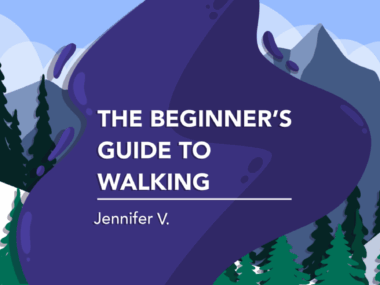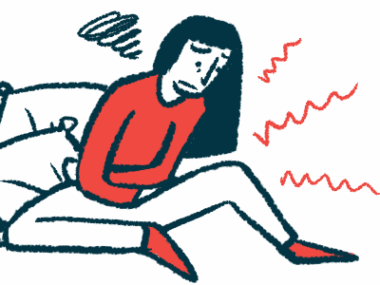For me, preventing relapses involves harsh medication side effects
My NMOSD treatments come with a frustrating trade-off
Written by |

Note: This column describes the author’s own experiences with various medication side effects. Not everyone will have the same response to treatment. Consult your doctor before starting or stopping a therapy.
Living with neuromyelitis optica spectrum disorder (NMOSD) feels like navigating a series of trade-offs. One of the most difficult aspects I’ve faced is with my treatment. I must consider what each medication might take away from me in exchange for its protection against disease relapses. Treatment decisions aren’t just medical. They’re also deeply personal, affecting my immune system as well as my relationships, identity, and quality of life.
Like many patients with NMOSD, I rely on immunosuppressants and symptomatic medications to help control the disease and prevent flare-ups. These medications are powerful, but they don’t come without a cost. The most persistent and frustrating side effects I deal with are drowsiness, disrupted sleep, and a negative impact on my sexual health.
At first, these side effects seemed like lesser evils. After all, an NMOSD relapse could mean a hospitalization, vision loss, or permanent paralysis. But as time has passed, these issues have started to chip away at the parts of my life that make it worth living.
Difficult side effects
Fatigue is already a common symptom of NMOSD, but when you layer medication-induced drowsiness or insomnia on top of it, the result can feel unbearable. It’s not just being tired; it’s feeling like a dimmed version of myself, stuck somewhere between surviving and functioning.
It was only a few years ago that my specialist finally prescribed me Provigil (modafinil), which I’m told is what fighter pilots are given to help them stay alert. While I don’t need that level of attention in my life, I do need to stay awake for the entire day at work. Modafinil used to work for me, but I worry my body has grown accustomed to it because it isn’t as effective anymore. Currently, it feels like an extra pill I’m taking several times a day that does little to support its intended use but still causes chaos in the middle of the night with insomnia.
Some of my other medications also make me drowsy during the day and then leave me feeling wired or restless at night. One such drug is Suboxone (buprenorphine/naloxone), which is often prescribed to treat opioid addiction or dependence, but can also be used for pain management.
I live in a strange limbo: always tired, never rested. I’m not sure if my body has become dependent on Suboxone, but I do know that my exhaustion affects everything I do. Staying engaged in conversations can feel like an uphill battle. Things I once enjoyed, like reading, cooking, or even watching a movie, require effort I don’t have during the day.
Another side effect that isn’t often talked about is the impact on sexual health. I was recently prescribed Cymbalta (duloxetine) to help manage my chronic pain and support my mental health. However, for me, the medication comes with a frustrating trade-off: It completely kills my libido.
Sexuality is a core part of the human experience, connection, and self-expression. Losing that dimension of myself has made me feel guilty in my marriage, caused confusion around intimacy, and made it harder to maintain a positive self-image. I’m still here, still in this body, but it no longer responds the way it used to. That loss is real and it deserves more than a passing mention in a brochure about possible medication side effects.
Weighing the trade-offs
So are the side effects worth it?
That question has no universal answer. I used to think preventing a relapse was worth any personal sacrifice, but I’m not sure a lifetime of trading away quality of life is sustainable for me.
What I’ve learned is this: Effectiveness isn’t everything. A medication that prevents relapses but quietly erodes my quality of life can still be a problem. And it’s OK to advocate for myself when the side effects become too much. Doctors are trained to look at labs, MRIs, and relapse rates, but only I can speak to how I actually feel.
I wish more people — providers, loved ones, even other patients — understood that managing NMOSD isn’t just about managing the disease. It’s about managing yourself in the context of this disease. Every medication is a negotiation between what it gives you and what it takes away.
I’m not ungrateful for the progress in NMOSD treatment — far from it. These medications are saving my life. But I’ve also come to believe that quality of life deserves equal billing with disease control, and that side effects shouldn’t be silently endured just because they don’t show up on a scan.
Note: Neuromyelitis News is strictly a news and information website about the disease. It does not provide medical advice, diagnosis, or treatment. This content is not intended to be a substitute for professional medical advice, diagnosis, or treatment. Always seek the advice of your physician or other qualified health providers with any questions you may have regarding a medical condition. Never disregard professional medical advice or delay in seeking it because of something you have read on this website. The opinions expressed in this column are not those of Neuromyelitis News or its parent company, Bionews, and are intended to spark discussion about issues pertaining to neuromyelitis optica spectrum disorder.






DPM
Fellow Canadian here who has followed your columns since I was diagnosed in 2021. I’ve recently gone down the Cymbalta pain route and it has been a wild ride. Recently Wellbutrin has been added in to help combat a lot of the Cymbalta side effects. Maybe it might be an option for you as well.
Fellow nmo, lupus warrior. I also have a very close friend who has rp too. Thanks for sharing your journey.
Jennifer V.
Thanks for being a loyal reader. That means a lot. I'll also look into your recommendation. Thanks! Take care of yourself and be well. -Jennifer